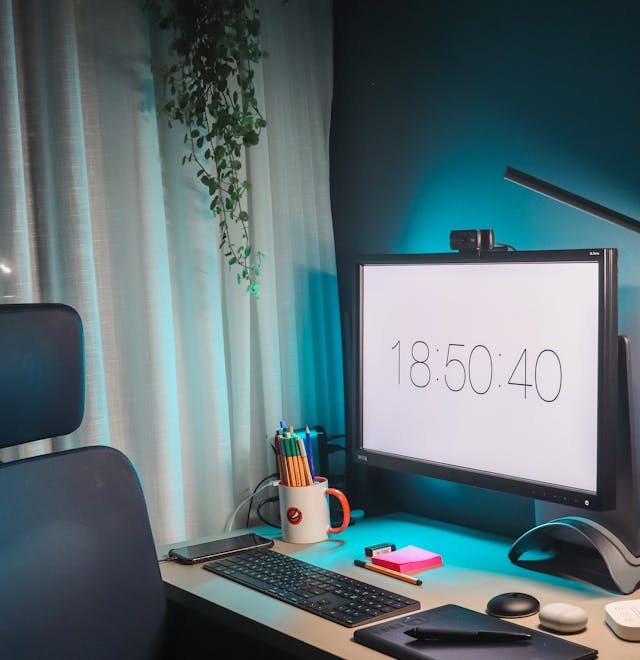Modern office workers are all too familiar with back pain. It can seriously impact our productivity and performance properly on the job.
This is combined with the fact the UK works the longest hours in Europe, an average of 42.5 hours per week, and it’s easy to see why many people suffer from back pain caused by sitting.
Sitting at a desk too long can cause back pain. You run the risk of injury to your neck, knees and hips as well as poor circulation throughout your body.
If you sit for 6-8 hours a day at work, it is easy to slump in your office chair. This can be avoided by practicing mindful sitting, read more here.
How to Sit Correctly in an Office Chair
Although it may seem obvious, sitting properly and being aware of your posture is a skill that takes practice. We often fall back into old bad habits, such as hunching over the keyboard at work, putting strain on our necks and upper backs, or slumping in our chairs without proper support for our lower backs.
Relax your neck and shoulders by allowing them to relax.
Place your feet flat on the ground, just below your knees.
Your knees should be slightly lower than your hips. If necessary, use a footstool.
Properly support your back by sitting properly in the office chai . Properly adjust the office back to fit your curves.
Keep your thighs parallel with the floor.
Crossing your legs can cause posture problems.
Your forearms should be extended horizontally with the help of your office chair’s arms. Keep your wrists straight and your wrists straight.
Place your monitor at arm’s reach from your eyes and ensure that the top of your screen is in line with your eyes.
Resisting Slouching in Your Office Chair
It is not easy to maintain a proper sitting position in an office chair. Many people fall into the trap and slouch without even realizing it. It’s easy to end up hunched over at the end of the day if we don’t practice mindfulness properly sitting.
It is recommended to change our position every 30 mins. However, this could lead to poor posture and a slump.
It is best to get up and take a few minutes off. You can take a walk down the corridor, drink water, or use the restroom. Do it every day, no matter what you do. This will help you keep your blood flowing and restore your good posture when you get back to your seat.
It’s not a good idea to stretch in your office, even if you are self-conscious. It is not healthy for our bodies to be sedentary for six-8 hours per day. It is important to stretch. It is important to move around. You can help yourself to move by setting a timer every 30 minutes. You’ll feel better if you do it more often.
Regular movement helps to reduce repetitive strain injuries, which are most common in office workers’ wrists and hands.
Invest in a Good Ergonomic Office chair
The right ergonomic office chair will make it easier to maintain a good posture.
The ergonomic office chair is scientifically designed with health, comfort, support, and posture in mind. An ergonomic chair can help you with all of these things and is essential for office workers who work long hours.
It is a long process to explain the ergonomics of a chair. Here’s a quick summary of what makes an ergonomic office chair.
Seat Height
This allows you to adjust the height of your seat according to your height. This allows you to maintain your feet flat on the ground while sitting correctly.
Seat Pan Height
Determine how far you want the seat to be from your back. This is based on your individual size.
Backrest Height
Adjust the height of the backrest to match your natural curve. The backrest should be higher for taller people than it is for shorter people.
Swivel Basis
This allows you to rotate to face different areas of your office desk. This reduces the chance of you twisting to reach for something, such as a telephone.
Back Angle
This allows you to recline your backrest to reduce some of your upper body weight
Seat tilt
For maximum comfort and positioning, position your seat at a comfortable angle to your pelvis. Keep your thighs parallel to the ground.
Arm Support
Adjust the height and width to align your office chair arms with your keyboard and desk.
Lumbar Support
Fully adjustable lumbar support that supports the natural curve of our spine
Headrest–
Relieve the strain on your upper back and shoulders with the correct positioning of the headrest
Check out our Top Selling Ergonomic Office Chairs
You can be more comfortable while sitting at your desk than you think.
What is the best office chair? Everybody is different so there is no one right chair for everyone. There is no universal chair that fits all. All these features allow you to customize your chair to meet your needs.
